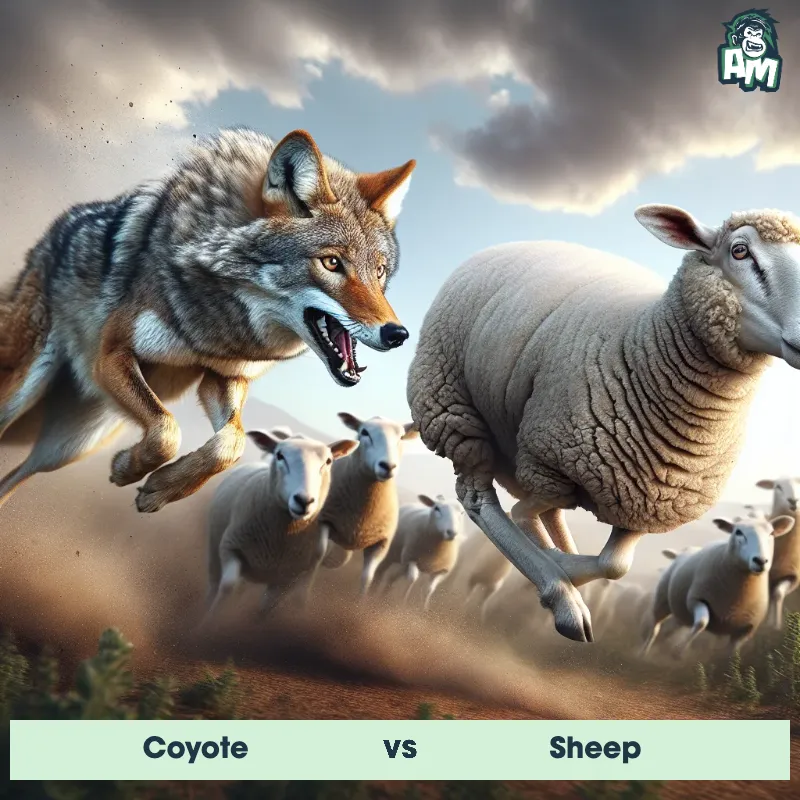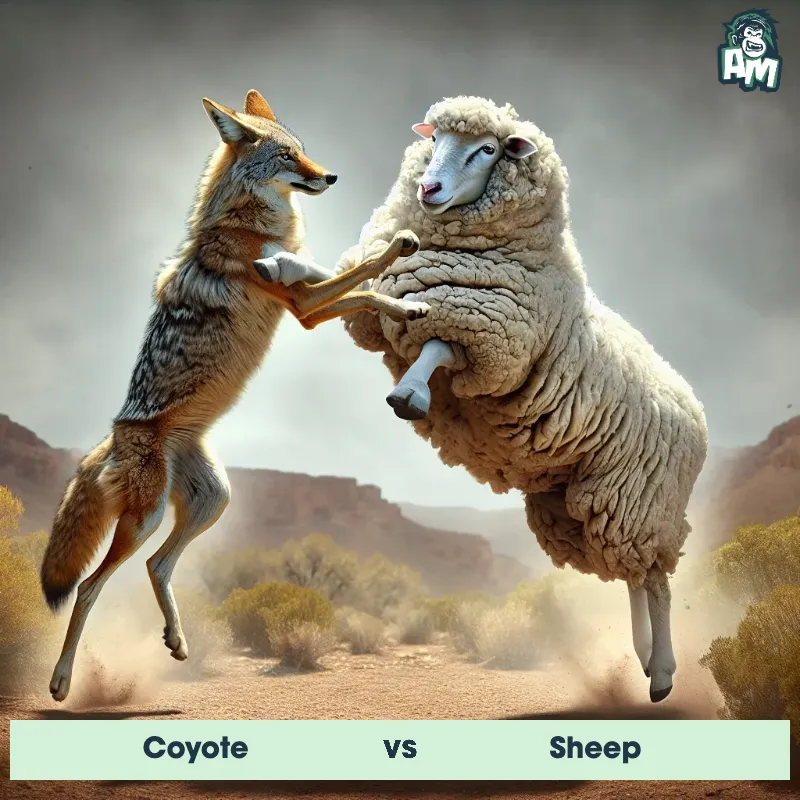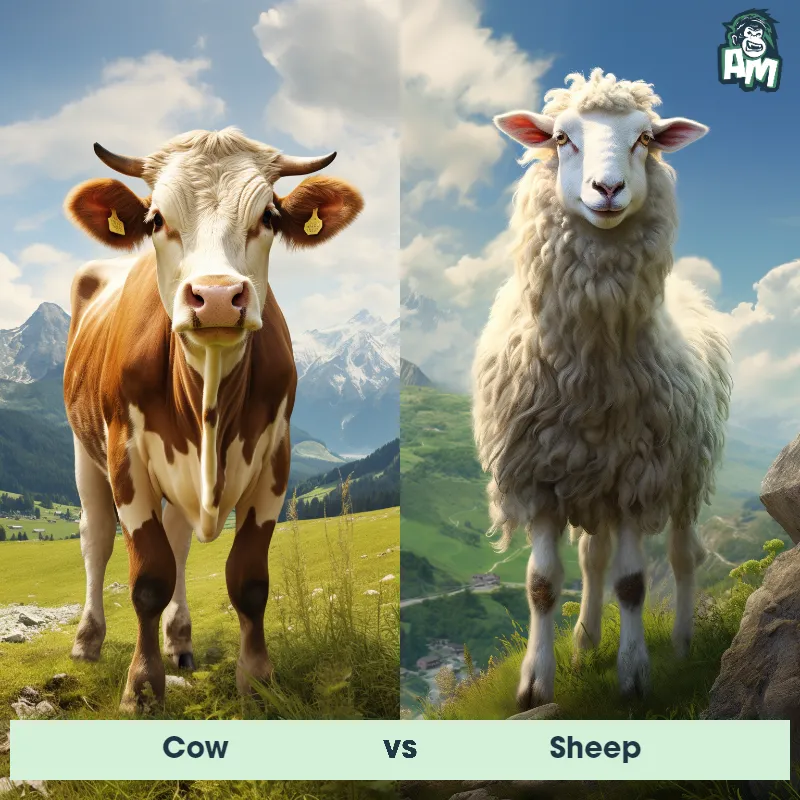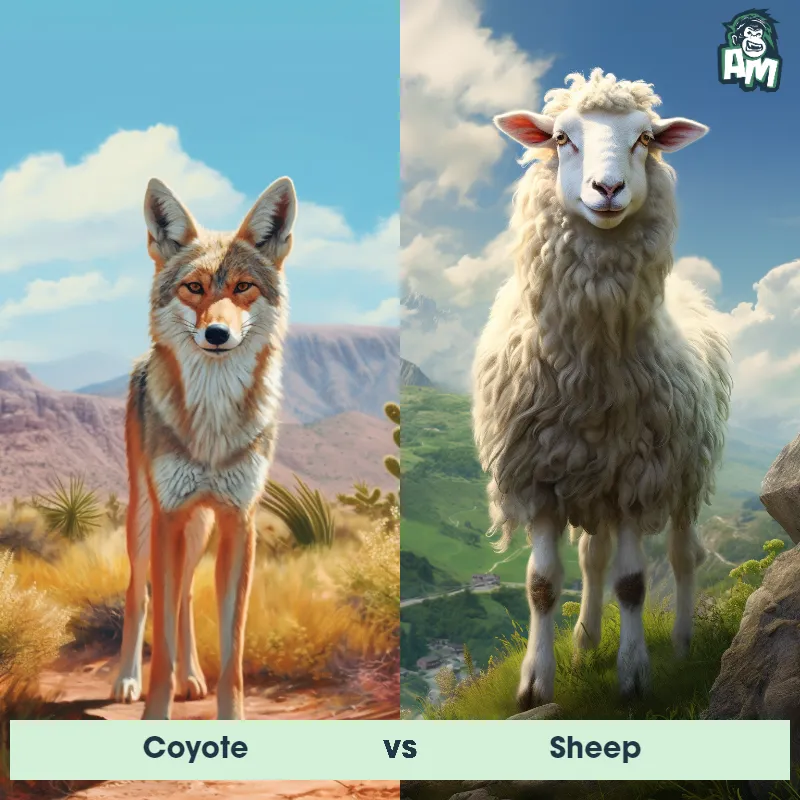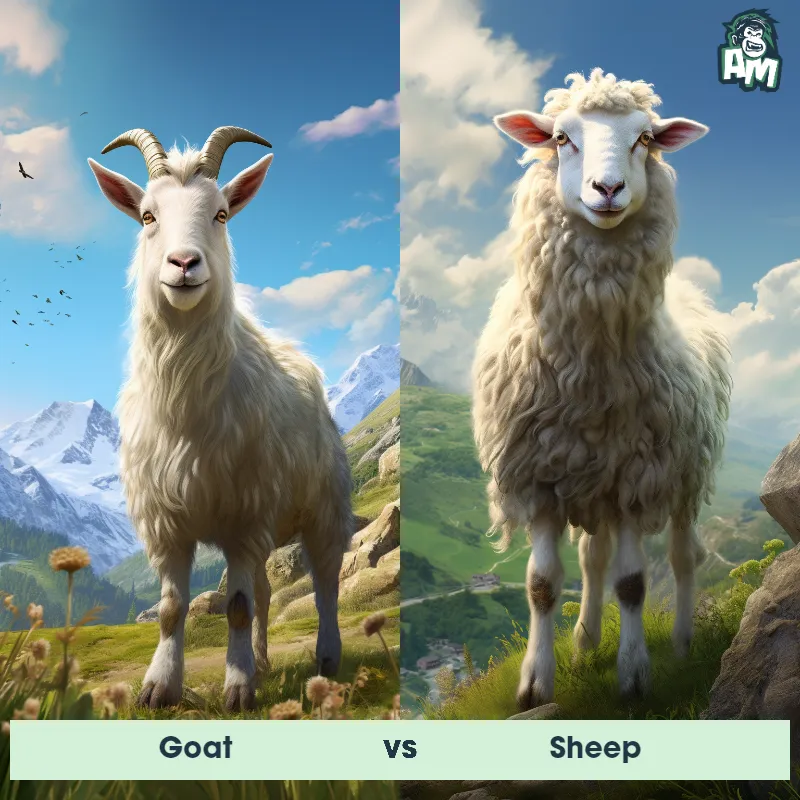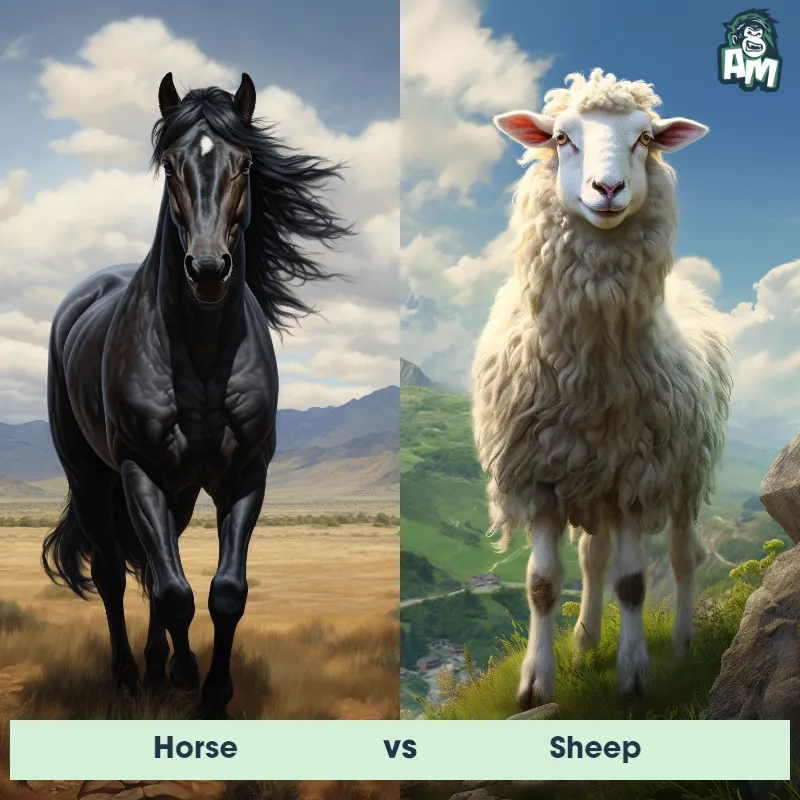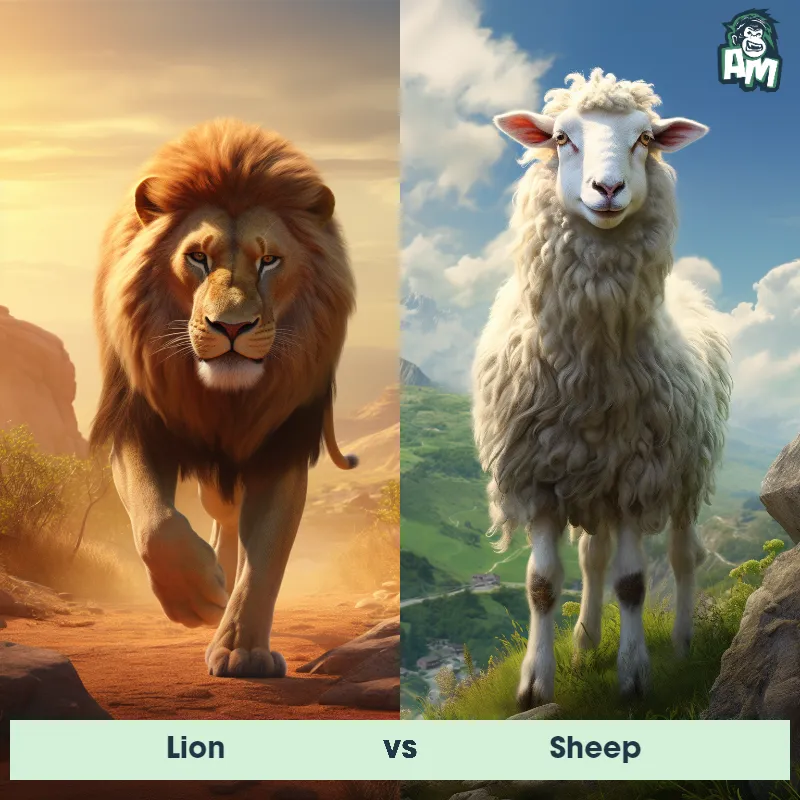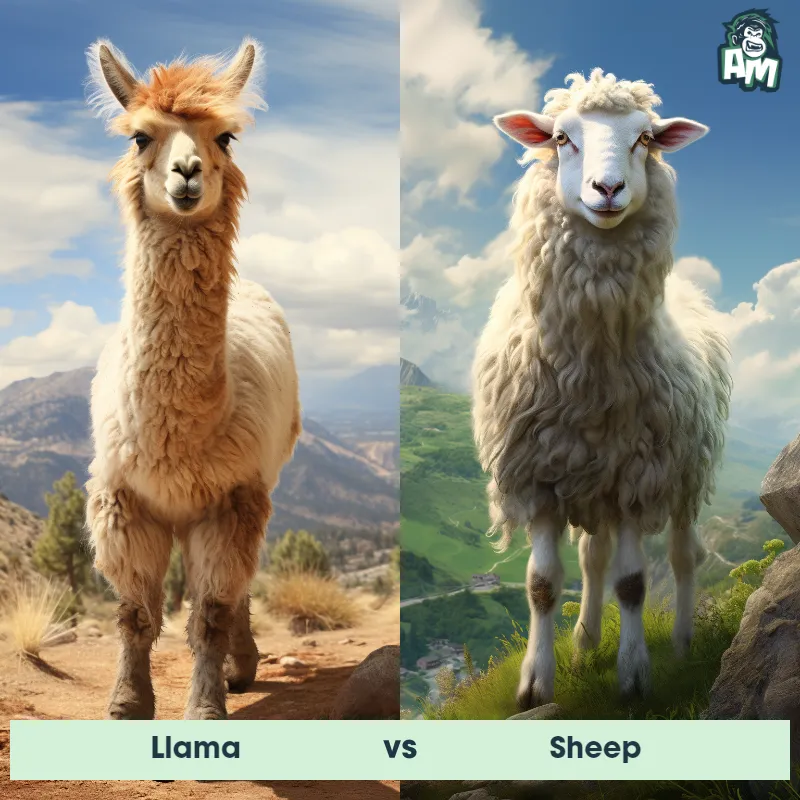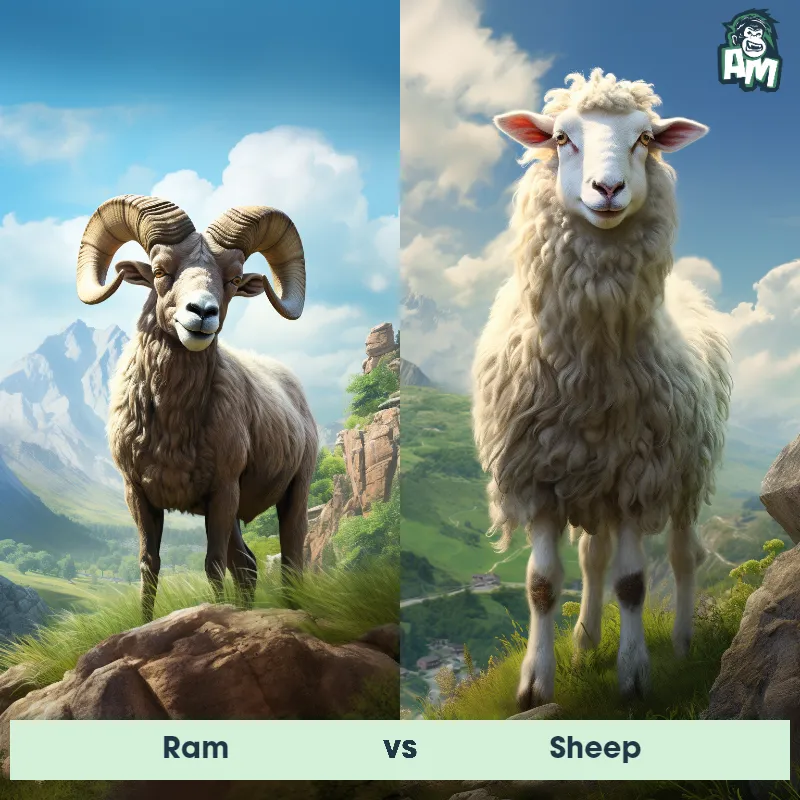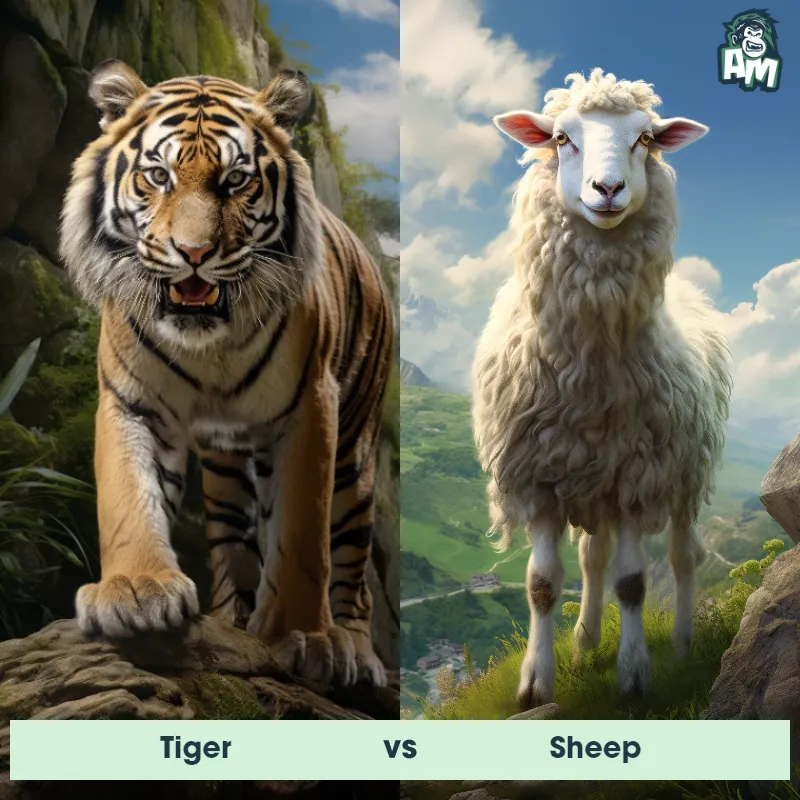The Sheep
The Sheep is a domesticated ruminant mammal known for its woolly fur and herbivorous diet. It is characterized by its slender body, short tail, and distinctively curved horns in some breeds. Sheep are known for their gentle and docile nature, making them easily manageable livestock. They are social animals that often live in flocks, grazing on grass and other vegetation. Sheep are bred primarily for their wool, while some breeds are also raised for meat.
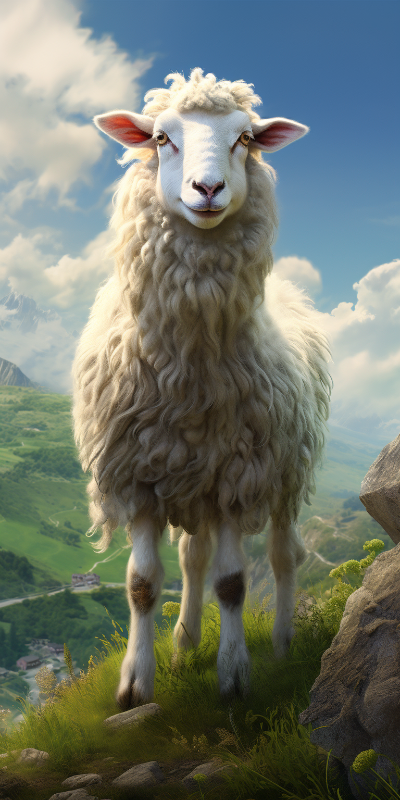
| Sheep | |
|---|---|
| Size | 2-3 feet tall at the shoulder (0.6-0.9 meters) |
| Weight | 99-230 pounds (45-104 kilograms) |
| Speed | 10mph (16km/h) |
| Key Strength | Head-butting |
| Biggest Weakness | Lack of speed and agility |
| Scientific Name | Ovis aries |
| Family | Bovidae |
| Habitat | Pastures, mountains, and plains |
| Geography | Worldwide |
| Diet | Herbivore, primarily grass |
| Lifespan | 10 years - 12 years |

The Sheep
The Sheep is a domesticated ruminant mammal known for its woolly fur and herbivorous diet. It is characterized by its slender body, short tail, and distinctively curved horns in some breeds. Sheep are known for their gentle and docile nature, making them easily manageable livestock. They are social animals that often live in flocks, grazing on grass and other vegetation. Sheep are bred primarily for their wool, while some breeds are also raised for meat.
Fun Fact: Sheep have excellent peripheral vision, with eyes placed on the sides of their head, allowing them to see a wide range of their surroundings and making them more aware of potential predators.
| Sheep | |
|---|---|
| Size | 2-3 feet tall at the shoulder (0.6-0.9 meters) |
| Weight | 99-230 pounds (45-104 kilograms) |
| Speed | 10mph (16km/h) |
| Key Strength | Head-butting |
| Biggest Weakness | Lack of speed and agility |
| Scientific Name | Ovis aries |
| Family | Bovidae |
| Habitat | Pastures, mountains, and plains |
| Geography | Worldwide |
| Diet | Herbivore, primarily grass |
| Lifespan | 10 years - 12 years |
Match Highlights
Sheep Matchups
We use AI to simulate matchups between the Sheep and other animals. Our simulation considers size, strength, and natural predatory behaviors to determine the most likely outcome.
Sheep: Diet, Predators, Aggression, and Defensive Behaviors
What do Sheep eat?
Sheep are herbivores and primarily graze on grass, clover, and other vegetation. Sheep have a complex digestive system that allows them to break down tough fibers in plants.
Do Sheep have any predators?
Yes, Sheep have several natural predators including wolves, coyotes, mountain lions, and domestic dogs. These predators primarily target Sheep for food, especially young lambs.
Are Sheep aggressive?
Sheep are generally not aggressive animals. Sheep tend to be docile and non-confrontational towards humans and other animals. However, like any animal, Sheep can become defensive if Sheep feel threatened.
Do Sheep fight?
Sheep typically do not engage in physical fights with each other or other animals. Sheep are more likely to try to flee or stick together in a flock when faced with a threat.
How do Sheep defend themselves?
One of the primary ways Sheep defend themselves is by staying in a group or flock. Sheep rely on safety in numbers and will often huddle together when Sheep sense danger. Additionally, Sheep may kick or butt with their heads if Sheep feel cornered.
What is the Sheep's biggest weakness in a fight?
One of the Sheep's biggest weaknesses in a fight is their lack of speed and agility compared to some predators. Sheep are not built for swift movement or quick escapes, making them vulnerable to attacks from faster predators. Additionally, their herding instinct can sometimes work against them, as Sheep may become easily disoriented or separated from the group when faced with a threat.
Fun Fact: Sheep have a unique digestive system that allows them to ferment vegetation efficiently. They possess a four-chambered stomach, which enables them to extract and absorb nutrients from plant materials that are otherwise indigestible to humans.
Fun Fact: Sheep are highly intelligent animals and have been found to possess problem-solving abilities. They can learn and remember faces, recognize their names, and follow commands, and studies have shown that they have comparable cognitive abilities to some primates.



